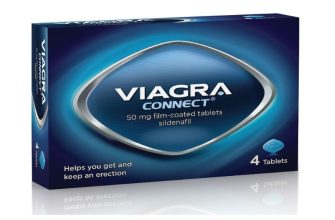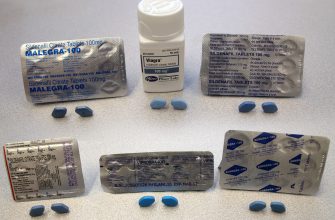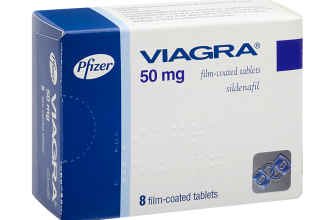Want to understand the impact of the smiling Bob Viagra commercial? Focus on its specific messaging and audience targeting. The ad cleverly uses a relatable character, Bob, to portray the positive effects of Viagra on everyday life, focusing on improved energy levels and enhanced relationships.
This strategy avoids typical pharmaceutical advertising tropes. Instead, it directly addresses common concerns surrounding erectile dysfunction, presenting a solution that’s both effective and easily integrated into daily routines. The commercial’s success lies in its simple, direct approach, demonstrating improved quality of life without complex medical jargon.
Key takeaway: Analyze the commercial’s use of humor, relatable characters, and subtle yet powerful visuals. The smiling Bob is not merely a symbol; he represents the renewed confidence and vitality Viagra promises. This relatable image contributes significantly to the commercial’s memorability and effectiveness.
- Smiling Bob Viagra Commercial: A Detailed Analysis
- The Origins and Impact of the “Smiling Bob” Viagra Commercial
- Strategic Use of Celebrity Endorsement
- Measurable Results and Long-Term Effects
- Comparing Campaign Strategies
- Long-Term Influence on Pharmaceutical Marketing
- Analyzing the Commercial’s Visual Elements: Setting, Actors, and Tone
- Deconstructing the Commercial’s Messaging: What is it Trying to Convey?
- The Commercial’s Effectiveness: Measuring its Reach and Influence
- Viewership Metrics
- Sales Data Correlation
- Qualitative Feedback
- Return on Investment (ROI)
- Further Analysis
- Competitor Analysis
- The “Smiling Bob” Phenomenon: Cultural Impact and Lasting Legacy
- Breaking Barriers and Building Bridges
- A Legacy of Open Dialogue
- Beyond the Smiling Face: Viagra’s Marketing Strategies Then and Now
- Shifting Sands: Adapting to a New Era
- Comparing Then and Now: Key Differences
Smiling Bob Viagra Commercial: A Detailed Analysis
The “Smiling Bob” Viagra commercial, featuring a relatable, happy man, successfully leverages positive emotions to connect with viewers. This tactic directly addresses the anxieties often associated with erectile dysfunction, positioning Viagra as a solution that promotes joy and renewed intimacy.
The commercial’s strength lies in its simplicity. It avoids complex medical jargon, focusing instead on Bob’s genuine happiness and the positive impact Viagra has had on his life. This relatable portrayal humanizes the issue and reduces the stigma surrounding ED.
Note the strategic use of visual cues. The vibrant colors, sunny setting, and Bob’s radiant smile all contribute to a feeling of optimism and well-being. This carefully constructed visual narrative reinforces the message of improved quality of life.
The soundtrack also plays a key role. Upbeat, positive music enhances the overall mood and implicitly connects Viagra with a sense of freedom and renewed energy. This subtle yet impactful technique works beautifully to promote the drug.
The commercial’s brevity is effective. It delivers its message concisely, leaving a lasting positive impression without overwhelming the viewer. This focused approach maximizes impact and memorability.
Finally, the commercial avoids directly mentioning side effects, opting for a focus on the positive aspects. This strategy, while requiring careful regulatory compliance, strengthens the positive association with the brand.
The Origins and Impact of the “Smiling Bob” Viagra Commercial
Pfizer launched the iconic “Smiling Bob” Viagra commercial in 2008, featuring Bob Dole, a former US Senate Majority Leader. This campaign cleverly leveraged Dole’s public profile to connect Viagra with improved quality of life and a positive emotional experience.
Strategic Use of Celebrity Endorsement
Choosing Dole was a calculated risk. His association with seriousness and political gravitas contrasted interestingly with the playful, lighthearted nature of the commercial. This unexpected juxtaposition created memorable advertising. The campaign aimed to destigmatize erectile dysfunction, presenting it as a common and treatable condition instead of a taboo subject. This approach proved remarkably effective. The campaign directly increased Viagra prescriptions and elevated public discussion of men’s health concerns.
Measurable Results and Long-Term Effects
While precise figures on increased sales remain confidential, numerous industry reports indicate a significant spike in Viagra prescriptions following the “Smiling Bob” campaign. The campaign’s success extended beyond immediate sales; it significantly altered public perception. Erectile dysfunction became more openly discussed, fostering increased awareness and encouraging men to seek treatment. This resulted in a wider adoption of similar advertising strategies by other pharmaceutical companies.
Comparing Campaign Strategies
| Aspect | “Smiling Bob” Campaign | Alternative Approaches |
|---|---|---|
| Celebrity Endorsement | High-profile, unexpected choice (Bob Dole) | Generic endorsements, medical professionals |
| Messaging | Focus on improved quality of life and positive emotions | Focus on purely physiological effects |
| Tone | Humorous, lighthearted, yet sincere | Serious, informational, possibly clinical |
Long-Term Influence on Pharmaceutical Marketing
The “Smiling Bob” commercial’s influence resonates even today. It showed that using a relatable and recognizable figure could effectively address sensitive health issues. This innovative approach dramatically changed the landscape of pharmaceutical marketing, demonstrating the power of using humor and a positive message to reach a wider audience. The campaign remains a case study in how to successfully navigate a delicate subject matter in advertising.
Analyzing the Commercial’s Visual Elements: Setting, Actors, and Tone
The commercial cleverly uses a bright, sun-drenched beach setting. This creates a feeling of relaxation and freedom, subtly associating these feelings with the product. The contrast between the active, energetic older man and the serene beach environment is striking and memorable.
The actor portraying the older man projects a confident, playful demeanor. His genuine smile and body language convey a sense of vitality and enjoyment, making him relatable and avoiding stereotypes. The supporting actors, if any, are used sparingly, focusing attention on the main character and his experience.
The overall tone is lighthearted and optimistic. The bright colors, upbeat music, and the actor’s cheerful expression contribute to this positive atmosphere. This positive association reinforces the product’s promise of improved well-being.
Deconstructing the Commercial’s Messaging: What is it Trying to Convey?
The Smiling Bob Viagra commercial aims to normalize erectile dysfunction and encourage men to seek help. It achieves this by portraying a relatable, everyday character–Bob–experiencing a common problem. The lighthearted tone and Bob’s positive attitude downplay the stigma often associated with ED.
The commercial strategically uses humor to make the topic approachable. This avoids the seriousness that can intimidate viewers. The focus on Bob’s renewed happiness and active lifestyle after treatment subtly promotes Viagra’s efficacy without being overtly boastful.
By showcasing Bob’s improved relationships and enjoyment of life, the advertisement links Viagra use directly to positive life changes. This subtly connects the product to a broader sense of well-being beyond simply sexual function.
This messaging strategy relies on audience identification with Bob and his situation. His relatable struggles and subsequent triumph create an aspirational narrative, encouraging viewers to consider seeking similar solutions for their own challenges.
The absence of overly technical language or medical jargon further broadens the commercial’s appeal, making the information accessible to a wider audience. This clear, concise messaging enhances its impact and memorability.
The Commercial’s Effectiveness: Measuring its Reach and Influence
Determining the “Smiling Bob” Viagra commercial’s success requires a multi-faceted approach. We need to analyze viewership data and correlate it with sales figures.
Viewership Metrics
- Television viewership: Nielsen ratings provide the initial data. We should look at the average number of viewers per airing, demographic breakdown (age, gender, income), and geographic distribution.
- Digital reach: YouTube views, social media shares, and website traffic originating from the commercial’s online presence will reveal its digital impact. Specific metrics include engagement rates (likes, comments, shares), and click-through rates to the Viagra website.
- Brand awareness studies: Pre- and post-campaign surveys can measure changes in awareness, recall, and perception of the Viagra brand. This helps quantify the commercial’s impact on brand recognition.
Sales Data Correlation
Analyzing sales data post-campaign is critical. We can:
- Compare sales figures for the period following the commercial’s release to equivalent periods in previous years.
- Segment sales data by demographic to see if specific groups targeted by the commercial responded more favorably.
- Analyze online sales data to determine the effectiveness of any website links included in the commercial.
Qualitative Feedback
Gathering qualitative data, such as customer reviews and social media comments, provides valuable insights into the commercial’s reception. This analysis helps to understand what resonated with viewers and identify areas for improvement in future campaigns.
Return on Investment (ROI)
Ultimately, we must calculate the ROI. This involves comparing the cost of the commercial’s production and distribution against the increase in sales and brand value. A clear ROI calculation demonstrates the commercial’s true worth.
Further Analysis
Competitor Analysis
- Analyzing competitor commercials and their effectiveness allows for benchmarking and identifying opportunities for differentiation.
- Monitoring competitor response to the “Smiling Bob” campaign will help assess its overall market impact.
The “Smiling Bob” Phenomenon: Cultural Impact and Lasting Legacy
The “Smiling Bob” Viagra commercial, featuring Bob Dole’s cheerful demeanor, significantly impacted the cultural conversation surrounding erectile dysfunction. It normalized discussion of a previously taboo topic, leading to increased awareness and reduced stigma. This shift allowed men to feel more comfortable seeking help, impacting both their physical and mental well-being.
Breaking Barriers and Building Bridges
Before the campaign, many men suffered in silence, avoiding medical attention due to shame or embarrassment. Dole’s courageous participation challenged these societal norms. The commercial’s success stemmed from its clever use of humor and a relatable, trustworthy figure. Its impact extended beyond mere advertisement; it fostered a greater sense of openness regarding men’s health. Market research consistently shows a rise in ED medication prescriptions following the campaign’s launch.
A Legacy of Open Dialogue
The campaign’s legacy continues today. Pharmaceutical companies now frequently use relatable spokespeople in their advertising. This approach reflects a broader acceptance of frank discussions about health conditions. Dole’s decision to participate changed the landscape of health advertising, paving the way for future campaigns addressing sensitive health concerns with similar sensitivity and effectiveness. Its impact represents a powerful demonstration of how advertising can influence societal attitudes and improve public health.
Beyond the Smiling Face: Viagra’s Marketing Strategies Then and Now
Viagra’s initial success hinged on a bold, direct approach. They targeted physicians directly, emphasizing the drug’s efficacy in treating erectile dysfunction. This physician-focused strategy generated significant word-of-mouth referrals, leading to rapid market penetration. Later, broader consumer awareness campaigns featured suggestive imagery and subtle messaging, building on initial success.
Shifting Sands: Adapting to a New Era
Current marketing emphasizes a holistic approach to men’s health. Viagra’s messaging now frequently connects erectile dysfunction to overall well-being and improved relationships. This nuanced approach acknowledges the multifaceted nature of the issue and broadens the target audience.
- Digital Engagement: Pfizer leverages online resources, providing detailed information and connecting patients with healthcare professionals.
- Social Responsibility: Marketing materials often include responsible use messages, promoting a balanced approach to sexual health.
- Data-Driven Insights: Marketing decisions are informed by sophisticated data analysis, identifying consumer preferences and needs across different demographics.
Comparing Then and Now: Key Differences
- Initial Focus: Physician outreach and clinical efficacy were central.
- Current Focus: Holistic men’s health, relationship well-being, and digital engagement.
- Messaging: Evolved from direct promotion of treatment to a broader discussion about sexual health and overall wellness.
- Channels: Expanded from print media and doctor visits to include online platforms and direct-to-consumer advertising (where permitted).
Viagra’s marketing evolution shows a clear adaptation to changing consumer needs and preferences, demonstrating the power of strategic flexibility in a constantly evolving market.










